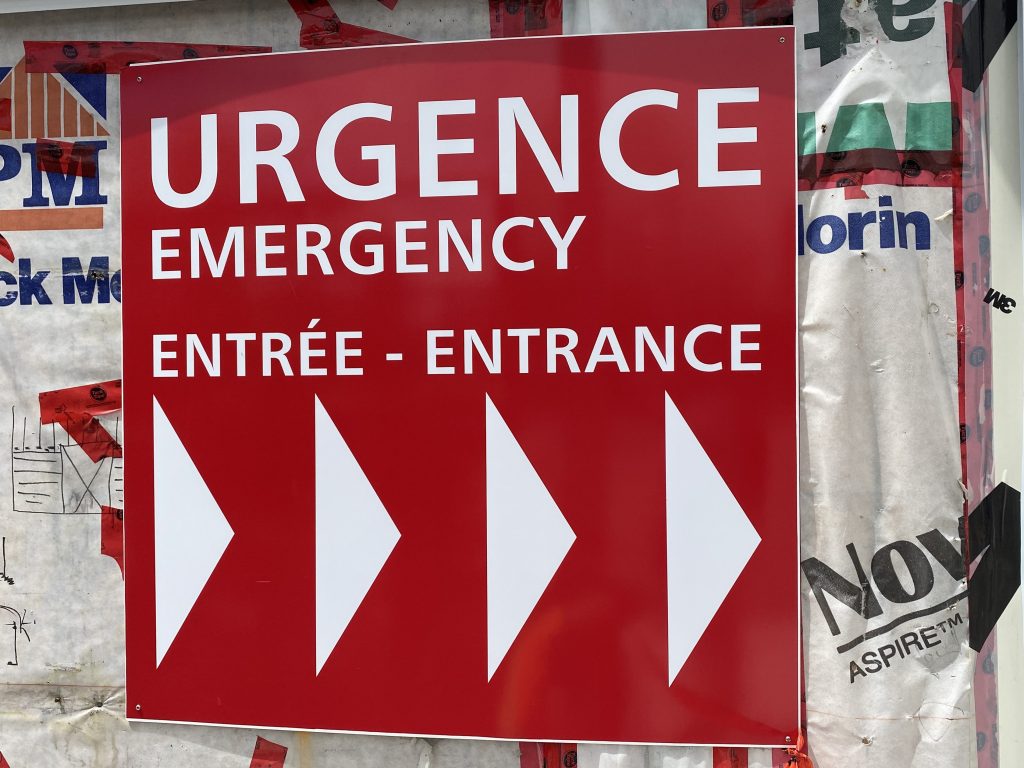Increase in the number of patients who leave Quebec ERs before being seen: study

Posted June 20, 2024 10:18 am.
The number of patients leaving emergency rooms before being treated is on the rise in Quebec, according to the results of a study by the Montreal Economic Institute (MEI) published Thursday.
In 2023-2024, over a period of approximately 11 months, 3.2 million patients visited an emergency department in Quebec and 11.5 per cent of them, or 376,460 people, left before receiving medical treatment.
By comparison, in 2018-2019, it was just over 10 per cent, or 378,348 patients out of a total of 3.7 million visits.
“One in two people wait more than five hours in the emergency rooms in Quebec. It’s not surprising that many will leave,” said author of the study, Emmanuelle B. Faubert.
Patients referred to another health-care professional who can meet their needs are not counted in this data since they are considered to have been taken care of.
“It’s still an increase because the study period in 2023-2024 is 11 months. So, we see that in 11 months (…) we have essentially the same number of patients who left the emergency room before treatment compared to (a period of) one year five years ago,” explained Faubert. “It remains a problem considering the increased budgets we’re putting into health care and all the reforms we make each year.”
She is particularly concerned about the 103,715 patients in categories P1, P2 and P3 who correspond to more urgent cases. According to data she obtained from the Ministère de la Santé et des Services sociaux, 25.3 per cent of priority three patients left the emergency room before receiving medical treatment, 2.2 per cent of P2 and 0.03 per cent of P1 patients.
The proportion of P1 to P3 patients who left the emergency department because they had not consulted a professional available to treat them increased from 21.9 per cent in 2018-2019 to 27.5 per cent in 2023-2024.
“It’s a big problem because it shows that our health system is incapable of taking care of Quebecers. And it’s dangerous when we think that the population is aging and needs are increasing,” said Faubert.
For less urgent cases (P4 and P5), more than 70 per cent of patients decided to leave the emergency room without being treated.
“People who are not urgent (cases), they don’t go (to the ER) for walk in the park. They go there because they need help, they need care, whether it’s urgent or not. They go there because they cannot find a better option elsewhere because we have a problem of access to the first line,” explained the economist.
She pointed out that a patient who leaves without treatment runs the risk of worsening their condition and returning to the emergency room as a more complex case.
Specialized nurse practitioner (SNP) clinics can be part of the solution, according to Faubert. There are 11 in the province, and their number is expected to double by 2028, but the economist believes that more needs to be deployed, more quickly.
She also described as “excellent news” the expansion of diagnosis for other health professionals, including pharmacists and nurses, included in the recently adopted Bill 67.
“It’s a step in the right direction,” she said.
—
The Canadian Press’ health content receives funding through a partnership with the Canadian Medical Association. The Canadian Press is solely responsible for editorial choices.
–This report by La Presse Canadienne was translated by CityNews








